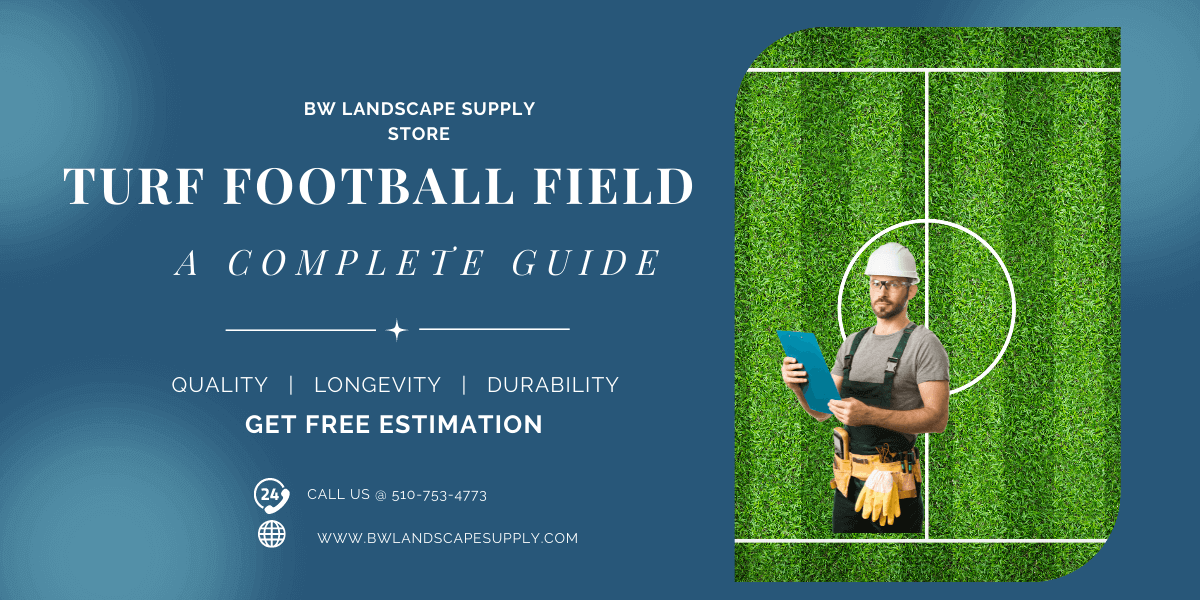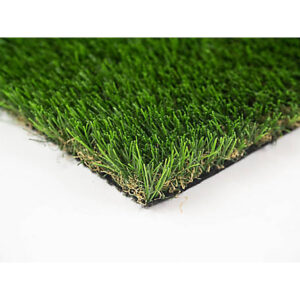If you are thinking of Designing Your Own Turf Football Field in your Backyard or in Your Local School. You must read this guide about how to choose right Turf for your Football field. Football is a sport that requires a lot of space to play, and having a dedicated field for your team can be a significant advantage. Turf football fields are becoming increasingly popular due to their durability, low maintenance, and the fact that they can be customized to meet specific requirements. In this article, we will guide you through the process of designing your own turf football field.
Understanding the Basics of Designing Your Own Turf Football Field
Before you begin designing your field, it is essential to understand the basics of turf football fields. These fields are made up of synthetic fibers that are designed to look and feel like natural grass. Turf fields are available in different pile heights, face weights, and fiber types, each with its own set of advantages and disadvantages.
If you’re looking for high-quality artificial turf installation services in Hayward, CA, look no further than Blue Wagon Landscape Supply Store. Our team of experienced professionals is dedicated to providing top-notch installation services that will transform your outdoor space. From residential to commercial properties, we have the expertise to get the job done right. Keep reading to learn more about our services and how we can help enhance your property.
Benefits of Professional Artificial Turf Installation Services:
When you choose professional artificial turf installation services from Blue Wagon Landscape Supply Store, you’ll enjoy numerous benefits. Firstly, our expert installation ensures that your turf will be installed correctly, minimizing any risks of damage or complications. Our team will also ensure that your new artificial turf looks beautiful and enhances the aesthetic appeal of your outdoor space. Additionally, artificial turf is incredibly low-maintenance, which means you’ll spend less time and money on upkeep. Finally, our installation services are designed to last for years to come, which means you’ll be able to enjoy your new outdoor space for longer.
Determining the Size and Orientation of Your Turf Football Field
The size of your football field will depend on several factors, such as the level of competition, available space, and budget. The standard size for a high school football field is 360 feet by 160 feet, while a professional field is 360 feet by 160 feet. The orientation of your field will also depend on factors such as prevailing winds, sun angle, and available space.
Choosing the Right Turf System
Choosing the right turf system is crucial to ensure optimal performance and durability of your field. The two main types of turf systems are sand and rubber infill. Sand infill is made up of silica sand and rubber, while rubber infill is made up of recycled rubber particles. Both options have their pros and cons, and the choice will depend on factors such as budget, climate, and intended use.
Selecting the Right Turf Fiber for Designing Your Own Turf Football Field
The turf fiber is an essential component of your turf football field, as it is responsible for providing the feel and look of natural grass. There are several options available, such as monofilament, slit film, and fibrillated turf fibers. The choice will depend on factors such as durability, performance, and aesthetics.
Which Artificial Turf is Best Suited for a Football Field?
When designing your own turf football field, choosing the right type of artificial turf is essential to ensure durability, performance, and player safety. There are various types of turf systems available on the market, but not all of them are suitable for football fields. Here are some factors to consider when choosing the best artificial turf for a football field:
a) Fiber Type
The type of fiber used in the turf system can significantly affect the performance and durability of the field. For football fields, it is recommended to use a monofilament fiber rather than a slit-film fiber. Monofilament fibers are more durable and provide better traction, making them ideal for football fields.
b) Pile Height
Pile height refers to the height of the turf fibers above the backing. The ideal pile height for a football field is between 1.5 to 2 inches. This height provides a natural feel underfoot and allows for proper ball roll and bounce.
c) Infill
Infill is the material that is placed between the turf fibers to provide stability, cushioning, and traction. There are various types of infill materials available, such as rubber, sand, and organic infill. For football fields, it is recommended to use a combination of rubber and sand infill to provide adequate cushioning and traction.
d) Drainage
Proper drainage is essential to prevent water buildup on the field and ensure player safety. Look for a turf system with a perforated backing that allows for proper drainage and prevents water buildup.
e) Durability
Football is a high-impact sport, and the turf system should be able to withstand heavy usage and foot traffic. Look for a turf system with high durability and resistance to wear and tear.
Based on these factors, a monofilament turf system with a pile height of 1.5 to 2 inches, a rubber and sand infill combination, and proper drainage would be the best option for a football field.
Overall, designing your own turf football field requires careful consideration of various factors to ensure optimal performance, durability, and player safety. By choosing the right type of artificial turf and following proper installation and maintenance procedures, you can create a custom and versatile playing surface for your team.
Designing the Field Markings
Once you have selected the right turf system and fiber, the next step is to design the field markings. The field markings are essential to ensure that the field meets the regulation size and shape for the level of play. You can either use pre-made stencils or custom designs, depending on your preferences.
Selecting the Right Infill Material before you Designing Your Own Turf Football Field
Infill material is essential for keeping the turf fibers upright and providing cushioning for players. The two main types of infill material are sand and rubber. Sand is the traditional infill material and provides excellent shock absorption, while rubber is more resilient and provides a more consistent playing surface.
Choosing the Right Accessories
Accessories such as goals, nets, and field dividers are essential for a complete football field setup. The right accessories will depend on factors such as level of play, budget, and preferences. It is essential to choose high-quality accessories that will provide durability and optimal performance.
Installing Your Turf Football Field
Installing a turf football field requires careful planning and execution. It is essential to follow the manufacturer’s instructions carefully and hire experienced professionals to ensure a smooth installation process. The installation process will depend on factors such as the size of the field, the type of turf system and fiber, and the location.
Maintaining Your Turf Football Field
Maintaining your turf football field is crucial to ensure optimal performance and longevity. Regular maintenance tasks include brushing, raking, and cleaning. It is also essential to address any damages or repairs promptly to prevent further damage and ensure player safety.
Benefits of a Turf Football Field
There are several benefits to having a turf football field, such as low maintenance, durability, and customizable features. Turf football fields also offer consistent playing surfaces, regardless of weather conditions, which can be a significant advantage over natural grass fields. Additionally, turf fields can accommodate multiple sports and events, making them a versatile option for schools and community organizations.
Customizing Your Turf Football Field
One of the most significant advantages of turf football fields is the ability to customize the field to meet specific requirements. You can choose to add logos, team colors, and even custom markings to create a unique and personalized playing surface.
Cost of a Turf Football Field
The cost of a turf football field can vary depending on several factors such as the size of the field, the type of turf system, and the level of customization. However, turf fields are generally more cost-effective over time due to their low maintenance and durability.
Conclusion
Designing your own turf football field can be a challenging but rewarding experience. By following the steps outlined in this article, you can create a custom, durable, and versatile playing surface for your team. Remember to choose the right turf system, fiber, and accessories, and follow proper installation and maintenance procedures.

